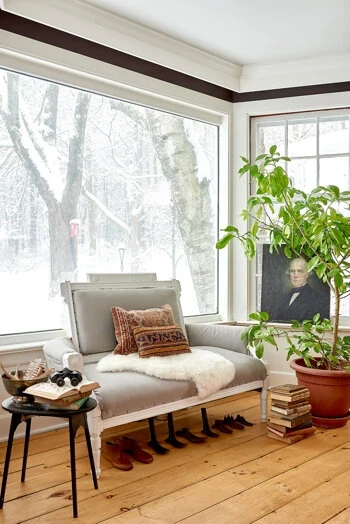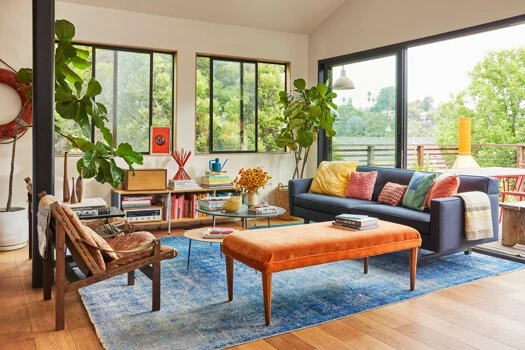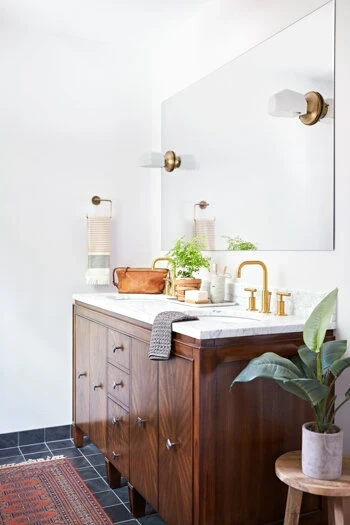What Is Biophilic Design? Here's How to Decorate with the Top 2022 Home Trend
Although we now spend the majority of our time indoors, the desire to connect with nature is written in our DNA. For our hunter-gatherer ancestors, nature was the source of food, clothing, shelter, and other basic necessities. Thousands of years later, our needs can be easily met without foraging or hunting, but this pull toward the outdoors remains embedded in our psyches. The challenge, then, is to figure out how to incorporate nature into our mostly indoor lives. That's where biophilic design comes in.
The concept comes from the term biophilia, which refers to the human tendency to interact with other forms of life. In design, it means creating a sense of harmony between your home and the world outside, and it's one of the biggest interior design trends this year.
Biophilic design was called out in Pinterest's 2022 trend report, which noted significant spikes in search interest for the term, and it's a buzzword you'll hear repeatedly from experts across the design industry. After two years largely defined by pandemic-driven isolation and anxiety, creating soothing spaces that bolster our health and well-being is perhaps more important than ever. To introduce this nature-focused trend to your space, consider these ideas for biophilic design.
1. Prioritize plants as a design element.

One of the easiest ways to dabble with biophilic design is through live plants. If you're a novice plant parent, start small with a low-maintenance plant for your desk or a set of potted herbs on your kitchen windowsill. For the more experienced indoor gardener, take your plant collection to the next level with creative solutions that integrate greenery into the room's design. To really reap the benefits of biophilic design, dedicate an entire wall to plants, line your staircase with greenery, or fill each corner of the room with your favorite leafy varieties.
2. Highlight the view outside.

If you're lucky enough to live in an area surrounded by nature, make sure your home's architecture takes full advantage of it. Frame views of the outdoors with large picture windows uninterrupted by grilles or sashes. This trick lets you utilize nature as wall art, and it works whether you live on a lakefront property or a grassy backyard. For views of the sky (and a boost of natural light), consider installing a skylight in a bathroom, hallway, or kitchen.
3. Foster an indoor-outdoor connection.

Connect indoor and outdoor living areas to create an easy flow between your home and nature. Consider installing sliding doors that you can throw open to unite your living room with an outdoor patio. A balcony off your bedroom or a deck that connects to your kitchen are other luxuries that can make nature feel like an intentional part of your home's design.
At the very least, open your windows on temperate days so you can breathe in some fresh air and listen to the sounds of the rain, wind, or birds outside. When it's too hot or cold for open windows, simply pulling up the blinds or drawing the curtains can boost your mood by letting in daylight and offering a glimpse of the outdoors.
4. Decorate with natural elements.

Biophilic design can also manifest itself in less literal ways. Apart from decorating with living plants, you can achieve a similar effect by filling your home with textures, colors, and shapes that replicate those you might find in nature. Choose materials such as wood, leather, and stone that derive from the outdoors, and opt for muted, organic tones in your color schemes. Incorporating subtle nods to nature in your decor is an easy and relatively inexpensive way to cultivate the calming qualities of biophilic design.